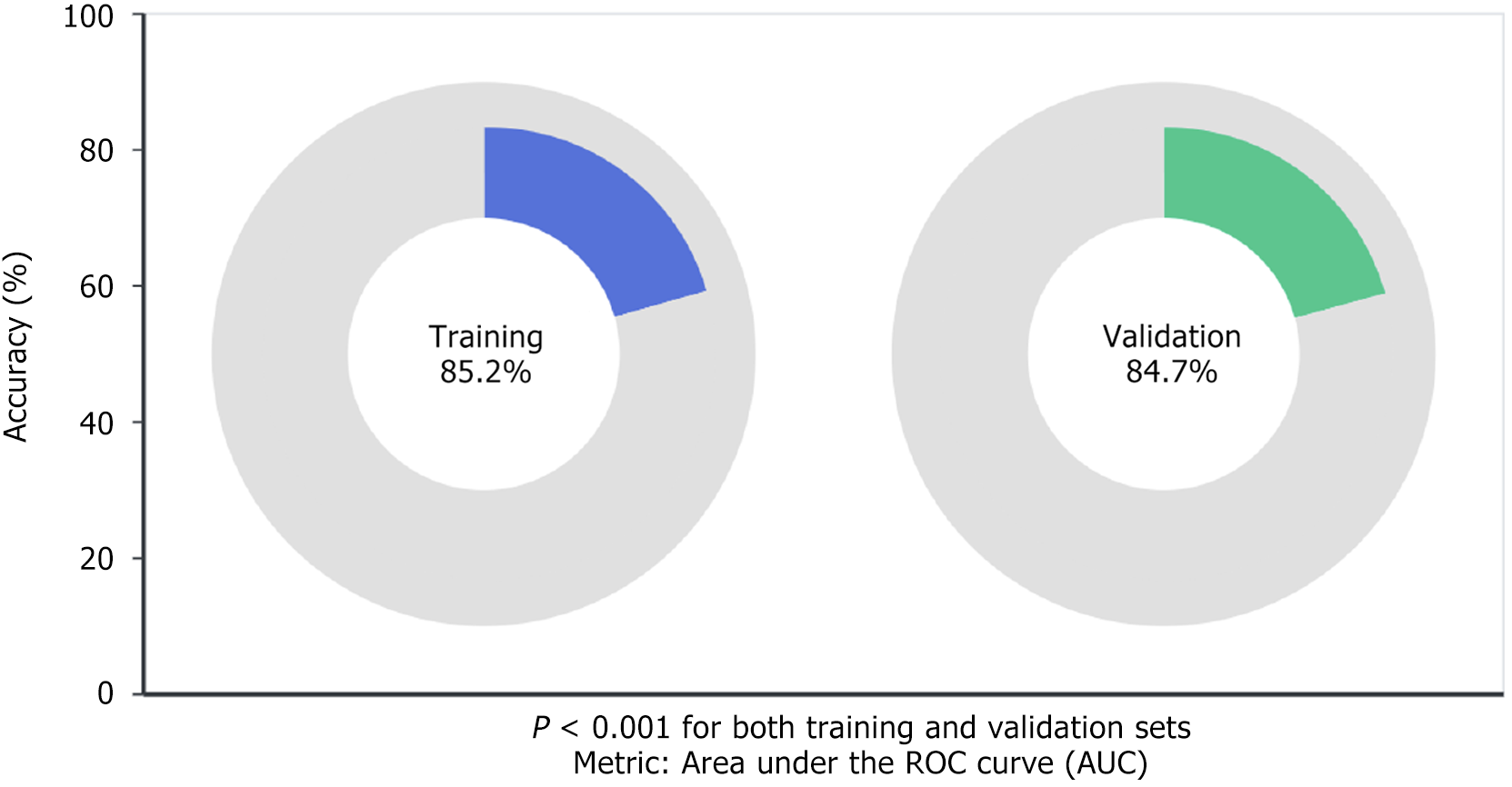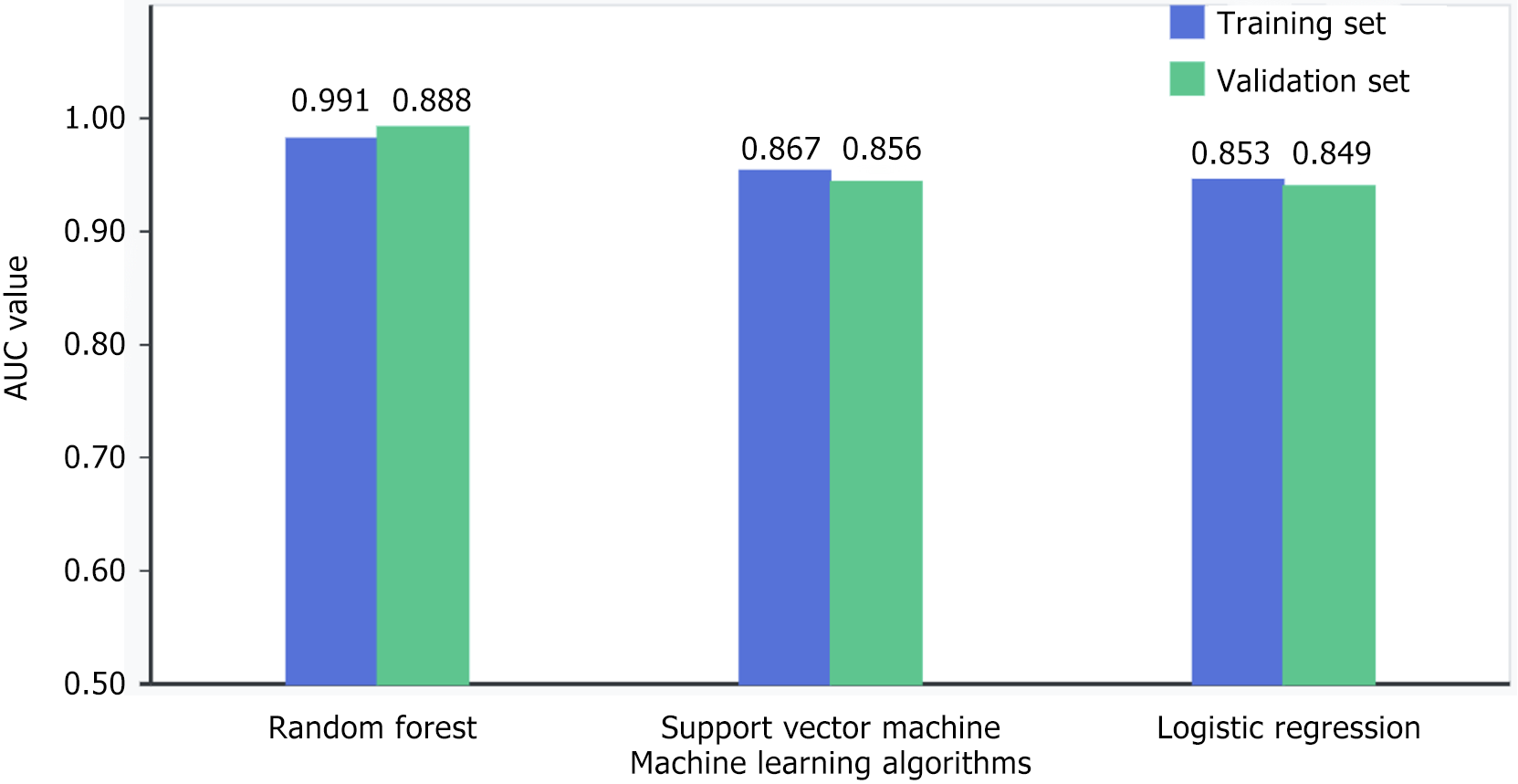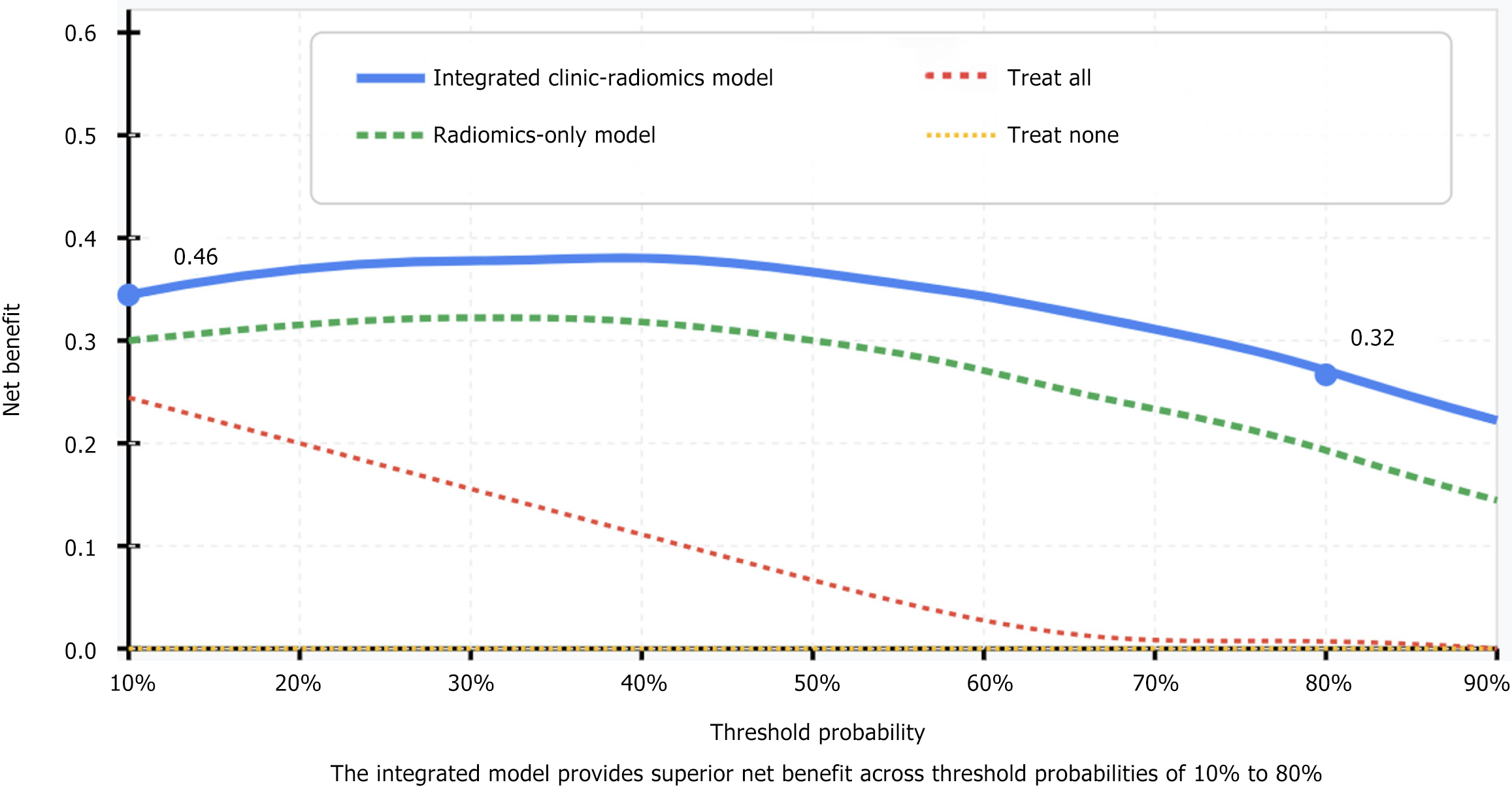Copyright
©The Author(s) 2025.
World J Gastrointest Oncol. Aug 15, 2025; 17(8): 108362
Published online Aug 15, 2025. doi: 10.4251/wjgo.v17.i8.108362
Published online Aug 15, 2025. doi: 10.4251/wjgo.v17.i8.108362
Figure 1 Machine learning models performance for microsatellite instability status prediction.
The models achieved 85.2% accuracy in training and 84.7% in validation (P < 0.001 for both), demonstrating good generalizability. This suggests radiomics-based machine learning approaches could serve as a valuable non-invasive tool for microsatellite instability assessment in clinical practice. ROC: Receiver operating characteristic; AUC: Area under the curve.
Figure 2 Comparative performance of different machine learning algorithms.
Random forest algorithm showed best performance in predicting microsatellite instability status with area under the curve values of 0.891 (training) and 0.896 (validation), outperforming support vector machine (0.867/0.858) and Logistic Regression (0.853/0.849). All models demonstrated good generalizability with statistically significant results (P < 0.001). AUC: Area under the curve.
Figure 3 Integrated clinic-radiomics model performance.
These results indicate that the integrated clinic-radiomics model not only performs excellently statistically (area under the curve values of 0.923 in the training set and 0.914 in the validation set), but also has clear application value in actual clinical decision-making.
- Citation: Zheng CY, Zhang JM, Lin QS, Lian T, Shi LP, Chen JY, Cai YL. Noninvasive prediction of microsatellite instability in stage II/III rectal cancer using dynamic contrast-enhanced magnetic resonance imaging radiomics. World J Gastrointest Oncol 2025; 17(8): 108362
- URL: https://www.wjgnet.com/1948-5204/full/v17/i8/108362.htm
- DOI: https://dx.doi.org/10.4251/wjgo.v17.i8.108362











